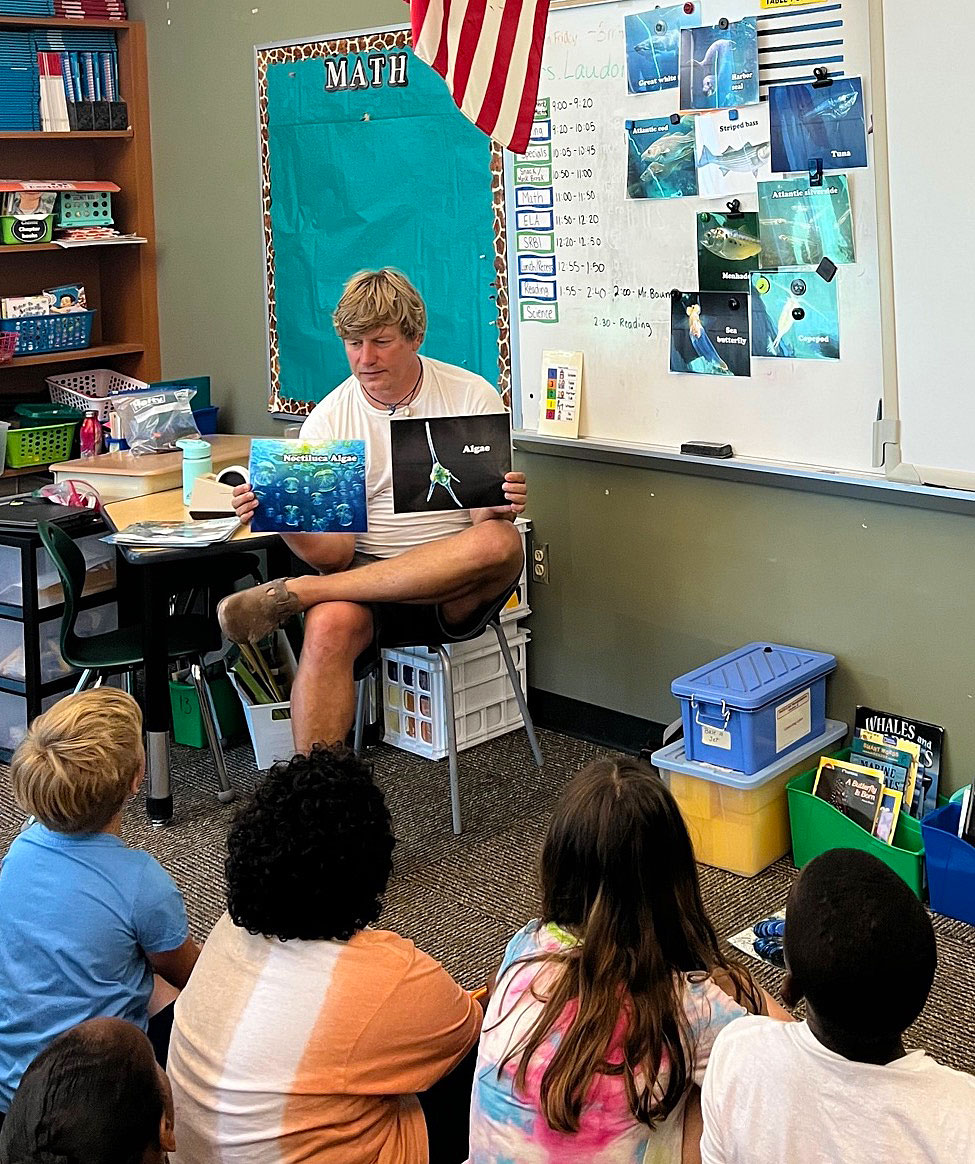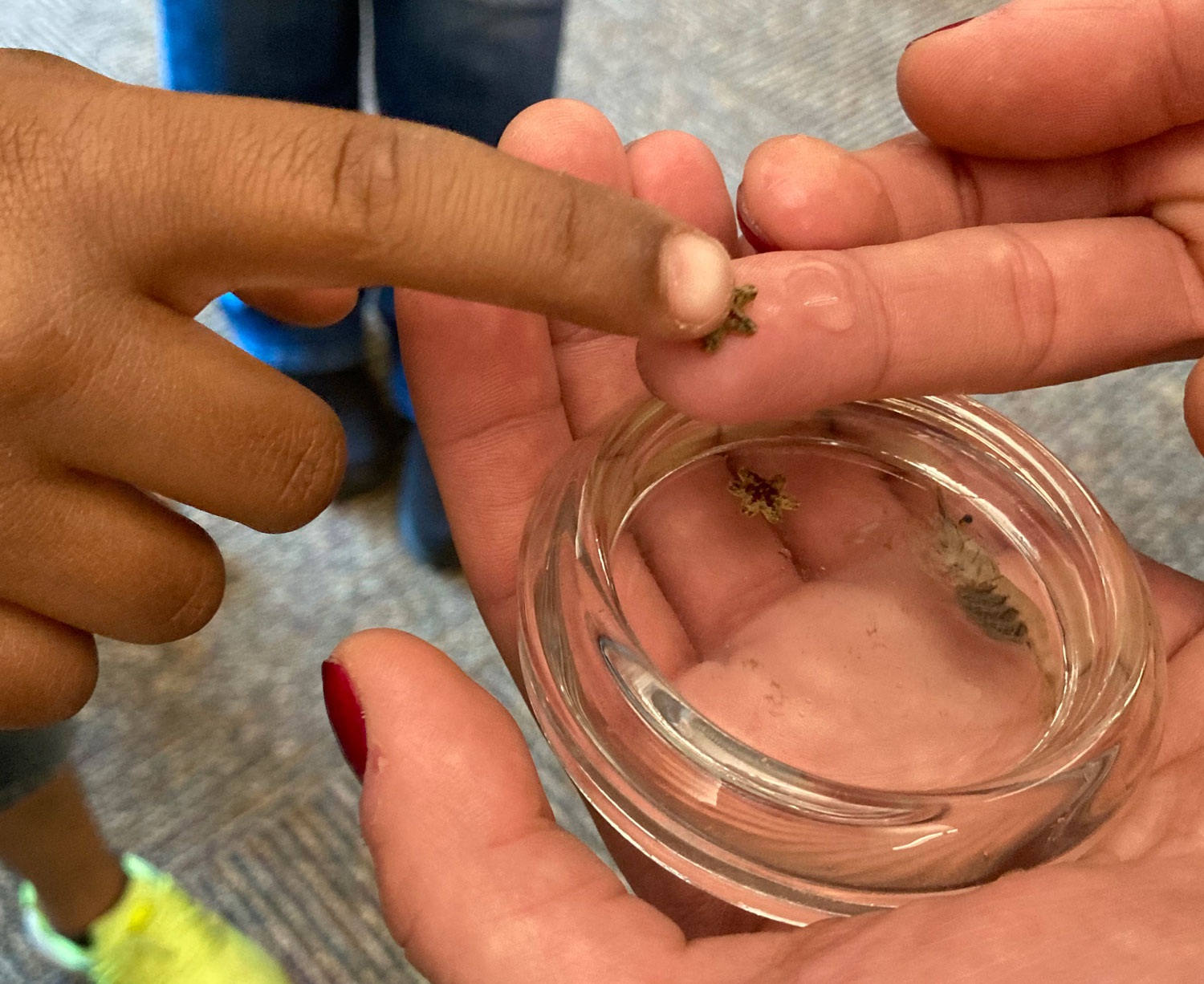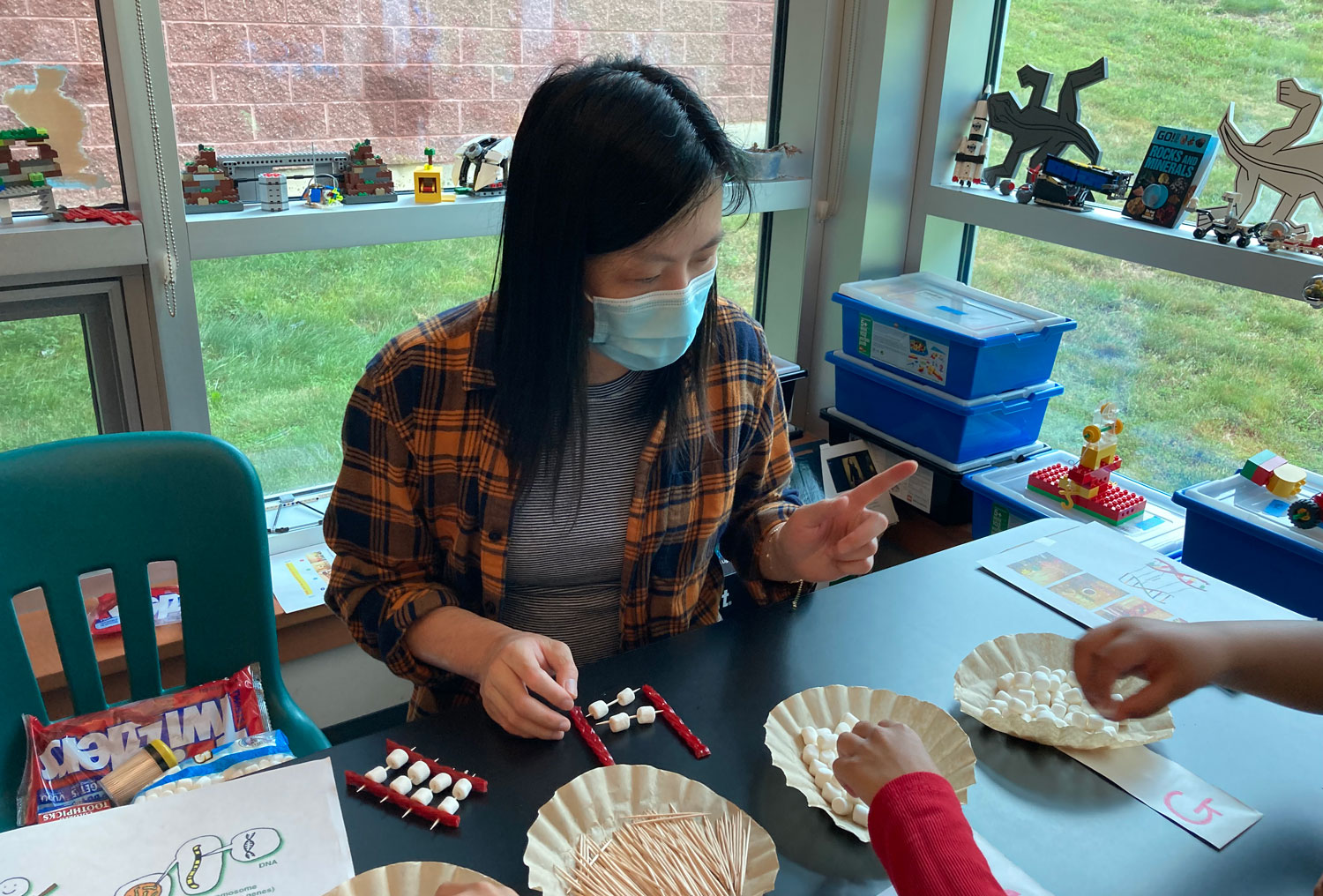By Ewaldo Leitao.
Academic institutions have a tendency to stay in the “Ivory Tower” and be distant from their surrounding communities. Scientific communication and outreach is a great way to minimize the gap between institutions and their communities, and to educate the new generation, especially about environmental awareness. We in the Marine Sciences Department try our best to be aware of this and reach out to communities in order to explain what we do. During the Ocean Week (June 7-9), Prof. Hannes Baumann and Dr. Zosia Baumann, reached out to the Catherine Kolnaski Steam Magnet School, in Groton/CT to give science talks about various marine science topics.
Zosia introduced the Long Island Sound and its importance to 2nd grade students. Then the kids split up to visit various stations. The stations were led by graduate students Ewaldo Leitão, Lingjie Zhou, Max Zavell, Jenna O’del (URI), Molly James, and Dr. Susan Smith. Each one showcased their area of expertise, but catered to 2nd graders.
There were four different stations. Ewaldo and Susan explained plankton and their importance, despite their tiny size, connecting with the kids using the famous Plankton from SpongeBob Squarepants as an example and how it was created based on copepods. To grab kids' attention, organisms were displayed in many different ways, with pictures, a dissecting scope that had a sample with shrimp, baby starfish, a concentrated sample of copepods, and finally a copepod under the microscope so that kids could see how similar copepods are to the Plankton.
Lingjie introduced the concept of DNA, and made the kids build their own DNA strand by using gummy candies and straws. She explained the bases of the DNA using gummies with different colors to represent each, and how they match in the strand. As a motivation, the kids could take their own DNA strand candy home.
Max and Jenna were explaining fish physiology and behavior. They used cleared and stained specimens to show bones and cartilage of the fish. These can determine important fish behavior such as schooling, which is easily observable in the wild.
Finally Molly explained the physics of the ocean. Using dyes to color water with different salinities, she demonstrated how salty water is denser and therefore stays in the bottom of the less dense, freshwater. These are not just important concepts for the ocean, it is why the kids can buoy easier in the ocean compared to lakes.
There’s an inherent joy and challenge in explaining scientific concepts to kids. We, scientists, are often told to have our elevator pitch in many levels of expertise, in order to explain what we do to our mom and to a potential employer. But explaining to kids is a completely different game. They can have a rather short attention span and yet get easily fascinated by new things. Therefore, explaining scientific concepts requires a combination of teaching them in an exciting way, that is also engaging but simplified so that they are able to retain the knowledge.
Having said that, it is a delight to end these interactions by asking the kids what they have learned, and listening to their excitement when they describe what they have just seen and experienced. Scientific outreach to our youngest generation is a great way to create environmental awareness and to build minds who will take better care of our planet.


